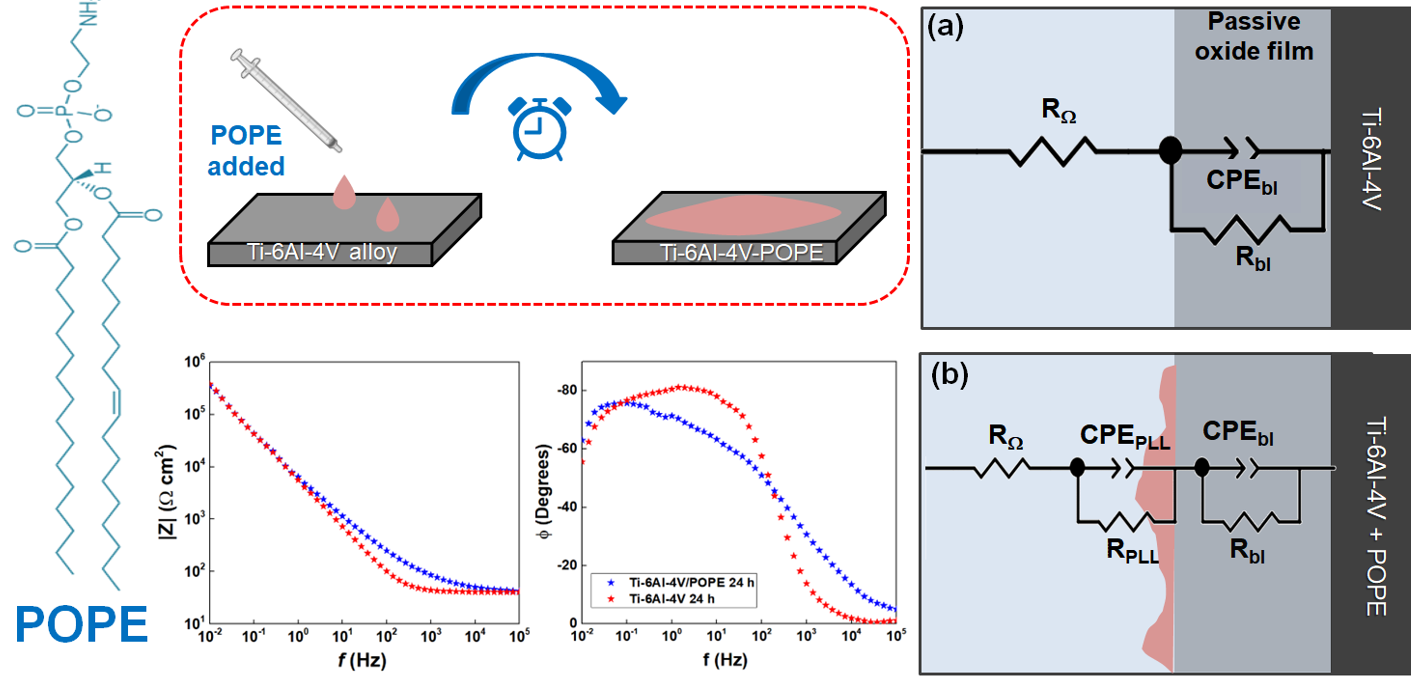The use of POPE Phospholipid as a First-layer Coating of the Ti-6Al-4V Alloy: Preliminary Studies: POPE phospholipid as a first-layer coating of the Ti-6Al-4V alloy

- Biomaterials,
- Coatings,
- EIS,
- Phospholipids,
- Titanium alloy
Copyright (c) 2024 Orbital: The Electronic Journal of Chemistry

This work is licensed under a Creative Commons Attribution-NonCommercial-NoDerivatives 4.0 International License.
Abstract
Phospholipids emerge as a powerful tool to be used as a coating for biomaterials, as they can increase the biocompatibility of the material and inhibit the growth of bacterial cells. Here, POPE phospholipid was deposited on the Ti-6Al-4V alloy surfaces by using a simple method, seeking to improve the corrosion resistance of the base material. Results show that the electrochemical potential of the Ti-6Al-4V/POPE is more positive than that observed in the base material, which could indicate a lower susceptibility to corrosion. Two EECs were used to explain the corrosion mechanisms of the coated and uncoated specimens, demonstrating the base material displays an oxide layer about 1.86 nm in the beginning of the corrosion tests and 2.59 nm after 24 h of immersion. Due to the complexity of the system containing lipids deposited on the metallic matrix, the corrosion behaviour of Ti-6Al-4V/POPE was evaluated considering only the evolution of the CPEs with immersion times. This work shows that the use of POPE for coating the Ti-6Al-4V alloy increased the corrosion resistance of the base material, expanding the range of advantages in the use of this surface treatment in the development of new biomaterials.




